Nara Travel Guide: Get To Know Japan's Ancient Capital

The ancient capital city of Nara has a history that predates Kyoto. In this article, we'll introduce information that anyone visiting Nara should know, such as the best ten sightseeing spots, hotels and dining places, as well as local souvenirs!
Nara - Meet Japan's Ancient Capital
The prefecture of Nara borders Osaka and Kyoto. While its neighbors are well-known to international visitors, Nara actually has a longer history than both.
Two of the country’s former capital cities were built in Nara Prefecture. Fujiwara-kyo was constructed in 694, and Heijo-kyo in 710. During the time when Heijo-kyo was the capital, Nara blossomed as the terminus of the Silk Road, with an international atmosphere and many architectural treasures.

That is why Nara has so many historical highlights, including the Great Buddha of Todaiji Temple and Horyuji Temple, the oldest wooden structure in the country, as well as many other registered World Heritage sites. Every fall at the great exhibition held at Shosoin, valuable discoveries from that era are taken from treasuries and made viewable to the public, little by little. Many people look forward to this exhibit and visit Nara in great numbers.
There are so many historic relics waiting to be excavated in Nara. It’s said that if you dig a hole in the dirt, you’re bound to discover something. While visiting this city, you’ll realize that ancient Nara still lives on beneath your feet.
Let this article guide you in your explorations of Nara's rich history, culture and beautiful nature.
Table Of Contents:
1. Nara's Main Sightseeing Areas
2. The Weather in Nara and What to Wear
3. How To Get To Nara
4. How To Travel Around Nara
5. 12 Recommended Spots To Visit in Nara
6. A Model Itinerary for Visiting Nara
7. Festivals And Events In Nara
8. 10 Excellent Souvenirs from Nara
9. Shopping In Nara
10. Accommodation in Nara
11. Local Food and Dining in Nara
12. Nara Tourist Information Centers
13. Other Useful Information For Your Trip
1. Nara's Main Sightseeing Areas
1. Nara Area
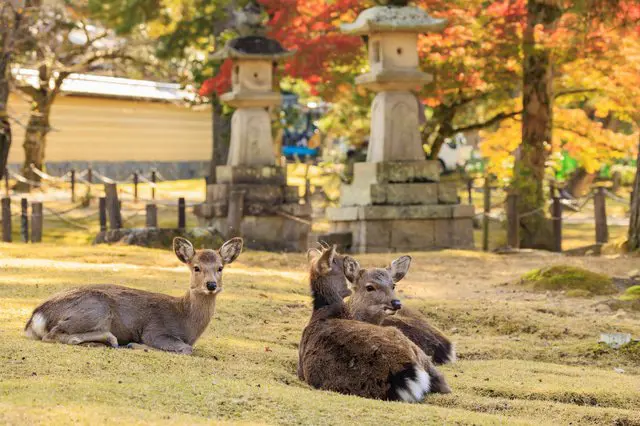
Nara Park is famous for its roaming deer, which are said to be sacred. The park encompasses Todaiji Temple, the Nara National Museum, the Sarusawa Pond, as well as many shrines, temples and historic buildings that are registered as World Heritage sites.
Edo era (1603 - 1868) homes are lined up on the streets of Nara, and you can feel the rich history of the city by just strolling around. You can also buy various items from all sorts of genres in the shopping streets and shops of Naramachi.
2. Asuka/Kashihara Areas
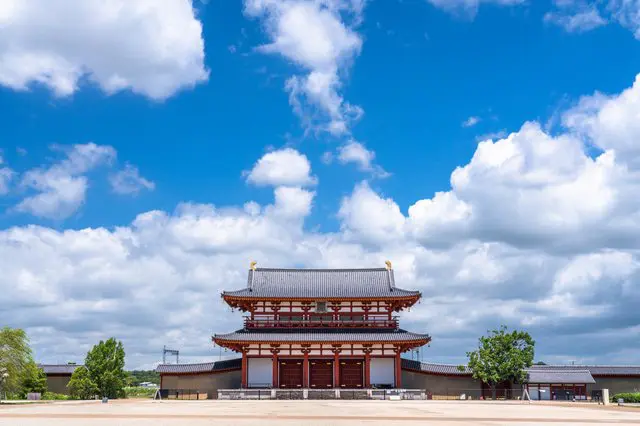
Asuka Historical Park spreads out to the south of Nara Basin. Mt. Kagu, Mt. Unebi and Mt. Miminashi, praised in poems from the 7th and 8th century, make up the three mountains of Yamato, and have been jointly designated as National Places of Scenic Beauty.
Other places you can easily visit include the Yamanobe Road, said to be the oldest road in Japan, the Kashihara Jingu Shrine, where the first emperor is venerated, Imai town, with its Edo townscape, and many other Japanese historical sites.
3. Ikoma/Ikaruga Areas
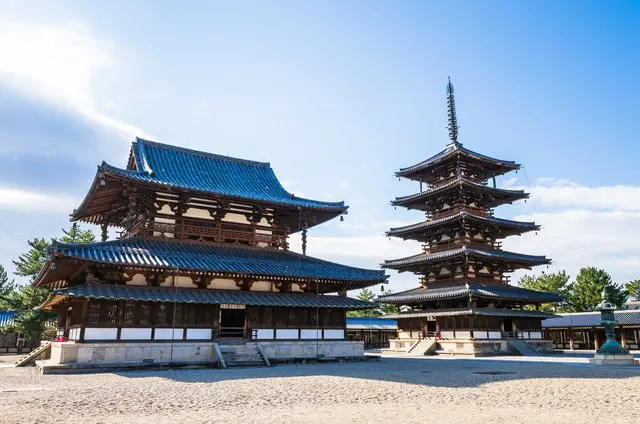
Mount Ikoma is located in the south, situated on the border that Nara shares with Osaka. The mountain is known as the setting for many divine tales and legends, and has been long-beloved by Nara residents for its connection to the gods.
Ikaruga is home to Horyuji Temple and other places associated with Umayado-no-Oji, otherwise known as Shotoku Taishi (574 - 622), one of the most important political leaders in ancient Japan.
4. Yoshino Area
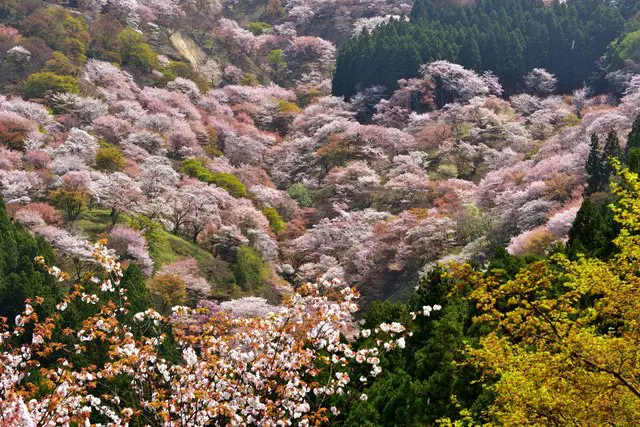
This mountainous region of Nara stretches from the center of the prefecture all the way to the south, and is blessed with many natural features to take full advantage of, such as hot springs with healing powers. Yoshino can be enjoyed in any season.
You can see the cherry blossoms in the spring, and hydrangeas in the summer; in the fall, the leaves of the trees turn bright red and gold, and the winter is the best time to see the dazzling snowy landscapes.
2. The Weather in Nara and What to Wear
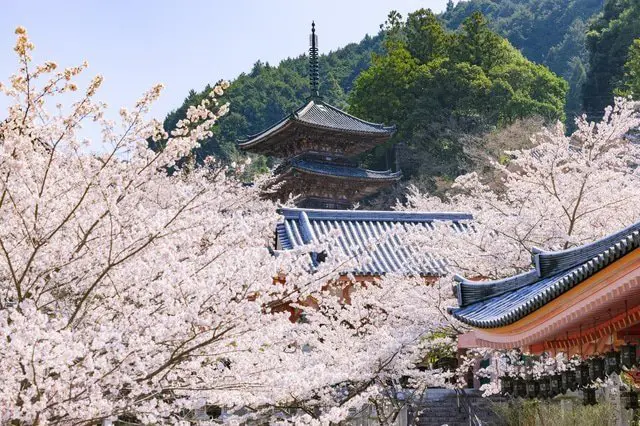
Since northern Nara is a basin, although the summers are sweltering (with temperatures during the day going over 35 degrees Celsius) and winters are cold (it's often less than 10 degrees Celsius), not much snow accumulates on the ground. Spring and fall are comfortable seasons, but make sure to bring appropriate gear to guard yourself against summer heat and winter chills.
The winter climate in the mountainside is even harsher, and you’ll need to bring extra protection against the cold. Keep this in mind if you plan to visit Mt. Yoshino, even if you’re going in the spring to see the cherry blossoms.
How To Get To Nara
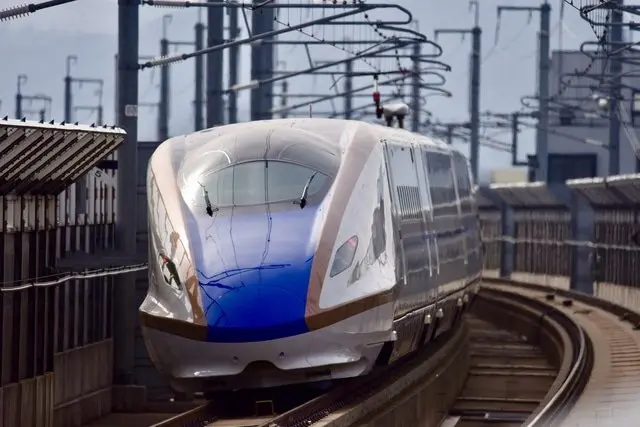
Traveling From Tokyo Via Train or Bus
There is no Shinkansen stop in Nara, so you cannot go directly from Tokyo via bullet train. The most common and convenient route is going to Kyoto first, and transferring there to a train headed for Nara. The JR Tokaido Shinkansen trains Nozomi, Hikari and Kodama all travel to Kyoto. From Kyoto Station, take either the JR train or the Kintetsu train to Nara Station.
You can also get to Nara by bus from Tokyo. There are highway buses and night buses operating between Tokyo and Shinjuku stations and JR Nara or Kintetsu Nara stations. The trip takes about nine hours: you'll go to sleep in Tokyo and wake up in Nara if taking a night bus. Prices for buses vary, from the least expensive being 4,000 yen and the most expensive being 9,500 yen.
For information on night buses, we suggest searching and booking with Kosokubus.com
Traveling From Osaka Or Kyoto Via Train or Bus
From Kyoto to Nara
There are train services from Kyoto Station to JR Nara Station and Kintetsu Nara Station. Hop on the JR Nara Line’s Miyakoji Rapid Service to get to Nara in 44 minutes. The fare is 720 yen. Via the Kintetsu Express, the journey takes 50 minutes and costs 640 yen. You can also take the Kintetsu Limited Express to cut your travel time to 35 minutes for 1,160 yen.
There may be just a couple of trains per hour, so if you miss these, it’s faster to take a train bound for Kashiwara Jingu-mae Station and switch at Yamato Saidaiji Station to a train heading for Nara.
Please be aware that JR Nara Station and Kintetsu Nara Station are located a 15-minute walk apart from each other. Kintetsu Nara Station is closer if you’re heading to Kofukuji, Nara Park, or Todaiji. If you’re going to Horyuji Temple, take the Yamato Line train from JR Nara Station.
From Osaka to Nara
You can take either a JR train or the subway to get to Nara from Osaka. If you took the Shinkansen to Osaka, head from JR Shin-Osaka Station to Osaka Station via the JR Kyoto Line. From there, take a Yamatoji Line train bound for Kamo, which will stop at Nara. It takes about an hour and costs 920 yen.
Other ways to Nara include taking the JR Osaka Loop Line to Tsuruhashi, then taking a rapid or express train bound for Kintetsu Nara Station. This way takes an hour and costs 680 yen. You can also take the municipal subway; ride the Midosuji Line to Osaka Namba Station, then switch to the Kintetsu Nara Line. This way takes about an hour, and costs 840 yen.
For more information, check out our article on The Shortest Ways to Travel to Nara from Kyotoand Osaka.
How To Travel Around Nara
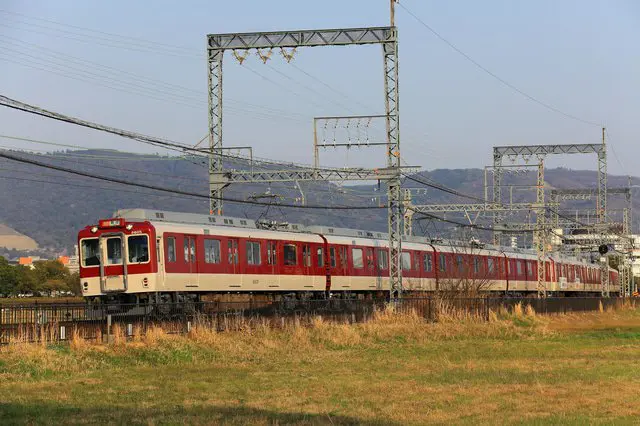
The JR and Kintetsu Railways operate within Nara Prefecture, so use the services of the one that brings you the closest to the places you want to go.
Via JR Train
JR offers a Kansai Area Pass every season, which allows holders unlimited travel on JR trains around Kansai (Osaka, Kobe, Kyoto, Shiga, Nara and Wakayama) for one or more days. These passes are available to reserve online (click this link to see prices and reservation details), and you can buy these passes at major JR West station counters, as well as the green vending machines at the stations.
If you show your ticket and claim tag at Kintetsu Osaka Abenobashi Station or Kyoto Station, you can get a round-trip ticket (including a limited express ticket) for trains to the Yoshino and Asuka areas, and it will also allow you unlimited use of the Ekirin-kun rental cycle service for a day.
Via Kintetsu Lines
Kintetsu has different rail pass options: the Kintetsu Weekend Free Pass, which allows holders unlimited train use for three consecutive days, including weekends, and the World Heritage Free Pass, which allows holders unlimited train and public bus use within designated areas. The latter can be purchased for traveling within Nara/Ikaruga (valid for one or two days), or within Nara/Ikaruga/Yoshino (valid for three days). The Weekend Free Pass is around 4,100 yen, and the World Heritage Free Pass costs around 1,500 yen a day.
For those coming to Nara via private rail or the subway, there are also the Nara/Ikaruga One Day Ticket passes and Ancient Roman Asuka Day-Trip Ticket passes, which allow holders unlimited round-trip travel. Fares vary depending on the place of departure, so ask at the information window. In addition, not every station sells these passes, so make sure you check the site:
By Bus
Nara has bus routes operating within the city. There are even special buses which run occasionally and travel to seasonal tourist spots.
You can ride the Nara Park Gurutto Bus for 100 yen, which is an efficient way to see the sights. In addition, you can freely get on and off buses operating in the designated areas, and you can receive discounts on temple admissions fees, as well as price drops at select stores. The varieties and prices are as follows:
Nara Park/Nishi-no-Kyo World Heritage 1-Day Pass (500 yen for adults)
Nara Park/Nishi-no-Kyo/Horyuji World Heritage 1-Day Pass Wide (1000 yen for adults)
Nara/Yamatoji 2-Day Pass (1500 yen for adults)
Shotoku Taishi-Related Areas 1-Day Pass (500 yen for adults)
Ask at bus ticket windows for more information, or check the sites below.
Bicycle Rental
Nara offers rental bicycle services. One of the ones most popular among tourists is the rental bicycle service for the Asuka Historical National Government Park in Asukamura. The park is a bit hilly, and the service offers electric pedal-assisted bicycles, bicycles with child seats, and child-sized bikes that come with helmets. A one-day rental for an electric bike is 1500 yen, a regular bike is 900 yen (1000 yen on weekends and holidays). The operators will deal with bicycle trouble, and you can drop your bike off at approved places.
12 Recommended Spots to Visit in Nara
1. Todaiji Temple
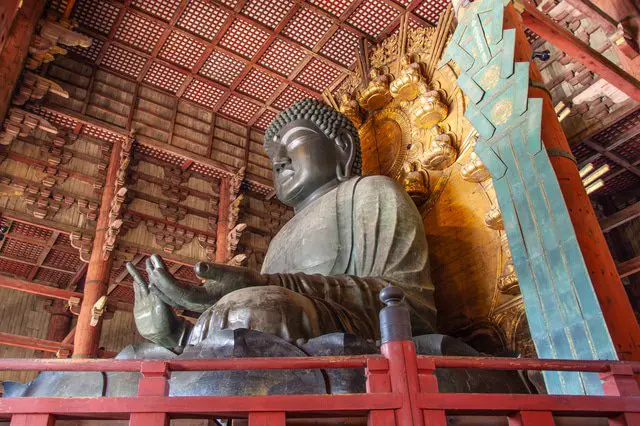
Todaiji Temple is one of Japan's first and most treasured Buddhist temples. It was erected in the 8th century and is a registered World Heritage site. Todaiji contains architectural marvels like the Daibutsu-den (Hall Of The Great Buddha), one of the world’s oldest wooden structures, Hokke-do Hall, with its lines of wonderful carved statues, and Nigatsudo Hall, where the springtime sacred rite of Omizutori (water drawing) is held. You can get an unbroken view of Nara from the Nigatsudo compound.
You should definitely see the 15-meter Buddha statue at the Daibutsuden, as well as the statues of the guardian gods at the great southern gate.
Todaiji is also the home of Shosoin, an ancient treasure repository managed by the Imperial Household Agency. During the early days of Japan as a state, Shosoin was used as a repository for the treasures brought from overseas. Some of these national treasures can be seen once a year on display at Nara National Museum.
Address: Nara Prefecture, Nara City, Zoshi-cho 406-1
Also read:
Let's go to Todaiji Nigatsudo and hog this beautiful scenery!
The Great Buddha Hall of Todaiji Temple, Nara
Shuni-e, A Todaiji Temple Ceremony Heralding The Arrival Of Spring
2. Horyuji Temple

Horyuji was erected in the 7th century, and became widely known as one of the world’s oldest structures. These days, the World Heritage site is divided into two temple areas: Saiin, built around the five-storey pagoda and Kindo Hall, and Toin, centered around Yumeden Hall.
Horyuji: Nara Prefecture, Ikoma, Ikaruga-cho, Horyuji-yamauchi 1-1
3. Nara Park

The expansive grounds at Nara Park contain so many sightseeing highlights that one day isn’t enough to see everything: the registered World Heritage temples and buildings of Todaiji, Kasuga Taisha, Kofukuji and Shosoin, in addition to the picturesque views at Ukimido Hall and Asajigahara Park and the Nara National Museum, to name just a few.
Other major highlights are the promenade on sacred ground within the forest at Kasuga Taisha and the beautiful Sarusawa Pond found on the precincts of Kofukuji Temple.
Nara Park’s most famous feature, however, is its thousand-strong deer population. Popular events at the park include a summer horn call to lure the crowds of deer, and the antler-trimming in the summer.
Address: Nara Prefecture, Nara City, Zoji-cho 469
4. Nara National Museum
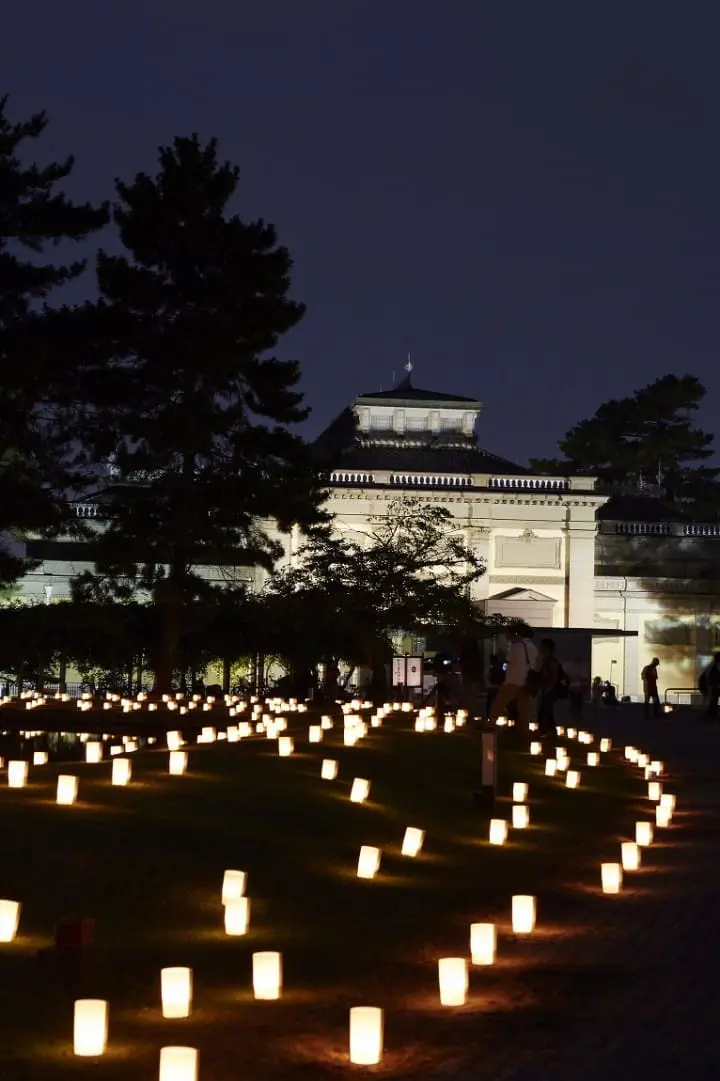
© JNTO
Although located within Nara Park, the Nara National Museum deserves a special mention. With its permanent and special exhibitions on the history of Nara and of ancient Japan, this museum is one of Nara's prominent cultural institutions.
The Nara National Museum has an amazing collection of Buddhist art (scultures, paintings, scrolls), as well as decorative artworks and ancient Chinese ritual bronzes. The facility often hosts events and symposia which give one the occasion to deepen one's knowledge about Nara and about the first centuries of Japan as a state.
Museum hours: 9:30 AM to 5:00 PM (last admission at 4:30 PM). Closed on Mondays.
Admission fees: General Admission 520 yen (410 yen), College Students 260 yen (210 yen), High School and Below - Free. *The prices in brackets are the fees for the individuals in a group.
Address: Nara city, Noborioji-cho 50
Website: http://www.narahaku.go.jp/english/index_e.html
5. Sarusawa Pond
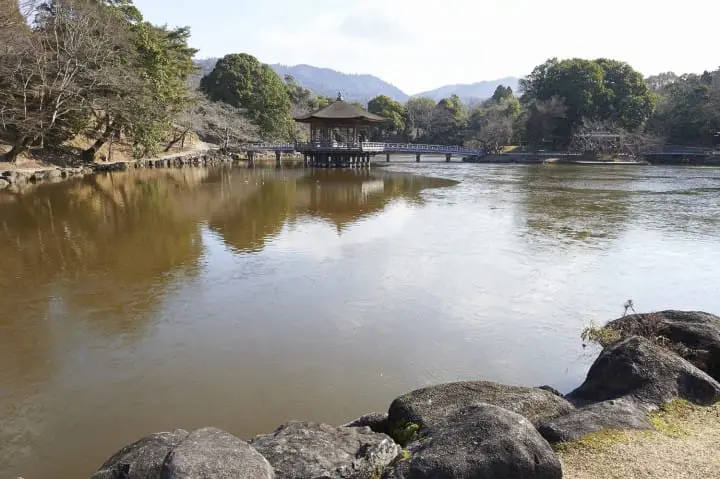
© JNTO
Sarusawa Pond is also part of Nara Park, lying on the grounds of Kofukuji Temple. According to a legend, a courtesan who fell from grace with the emperor drowned herself in this pond. It is believed that the many temples and shrines surrounding the pond help appesing her soul.
The pond, with the amazing pagoda of Kofukuji Temple in the background is a beautiful sight to behold. During the Festival of the Lanterns (Tokae) held each year at the beginning of August, Sarusawa Pond gets beautifully lit up. It is sight worth viewing!
6. Nishi-no-Kyo: Yakushiji and Toshodaiji Temples
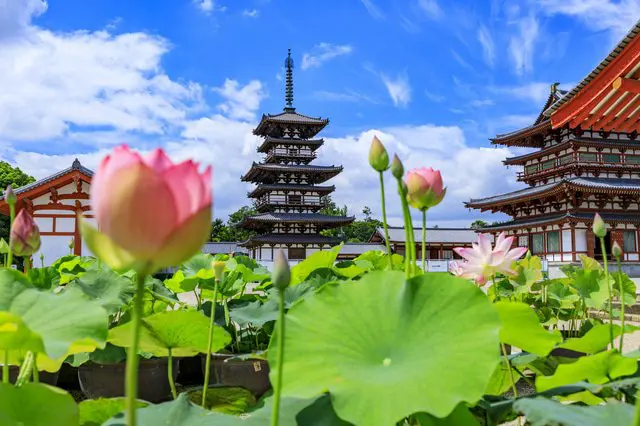
Construction began on Yakushiji in the 7th century, before moving to its current location in the 8th century. The temple is made of eight buildings, including Kindo Hall, Daikodo Hall and the Tozai Tower. The scarlet coloration of the pillars leaves a powerful impression.
Toshodaiji Temple is a ten-minute walk north from Yakushiji. Toshodaiji began when Ganjin, a priest from China who came to Japan and spent five years at Todaiji, used it as a place to teach adherents about Buddhist precepts. Afterward, Ganjin’s supporters made donations by building auditoriums and temporary main halls. After his death, the main hall and eastern tower (since destroyed by lightning) were constructed. It is said that the temple became its current form at the end of the 8th century. The main temple structure still conveys the architectural style of its era, and is a precious building. Both of these temples are World Heritage Sites, so don’t miss them!
Yakushiji: Nara Prefecture, Nara City, Nishi-no-Kyo-cho 457
Toshodaiji: Nara Prefecture, Nara City, Gojo-cho 13-46
7. Kasuga Taisha Grand Shrine
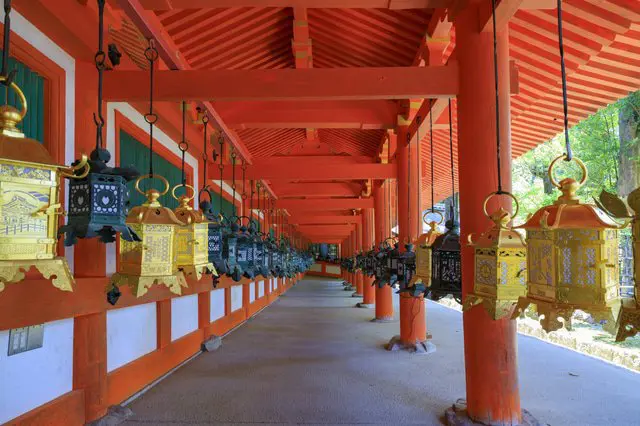
It is said that Kasuga Taisha was founded by the Fujiwara clan, who performed divine works and religious rituals to protect Heijo-kyo, the former capital. Legend has it that they brought the gods to Mount Mikasa, where no gods existed, and the Fujiwara clan’s deities are enshrined at Kasuga Taisha.
The shrine’s scarlet pillars, white walls and roofs of cypress bark have not changed in appearance since ancient times. This is because every 20 years, the entire shrine is reconstructed during a ceremony known as “shikinen zotai.” Also a World Heritage site, the shrine’s vermilion-lacquered galleries and hanging lanterns leave a strong impression on visitors. For more information, check out our article on Shikinen Zotai: Once in 20 Years at Kasuga Taisha (Nara).
Address: Nara Prefecture, Nara City, Kasugano-cho 160
8. The Remains Of The Ancient Capital (Heijo-kyo)

The castle remains of the ancient capital have been resurrected on the vast grounds of Heijo-kyo. The site contains the restored Daigokuden Council Hall, Suzakumon Gate and Tointeien Garden, as well as the Heijo-kyo Archive And Reconstruction Project Information Archives, as well as a Relic Exhibition Hall.
Another one of Nara’s World Heritage sites, you can really feel the passage of time at this special spot.
Address: Nara Prefecture, Nara City, Saki-cho
9. The Miroku Bosatsu (Maitreya Bodhisattva) At Chuguji Temple
Chuguji Temple, located next to Horyuji, is home to the Miroku Bosatsu statue. The statue is perched with its right leg on its left knee, and it appears to be deep in thought while resting its face in its hands, inviting comparisons to Rodin’s “The Thinker.”
This “oriental poet” statue is known for the fleeting smile on its face, often called an "archaic smile". Constructed with a unique wooden pre-yarding technique, you could call this bodhisattva the greatest wood-carved masterpiece of the era.
Address: Nara Prefecture, Ikoma district, Ikaruga, Horyuji-kita 1-1-2
10. Mount Yoshino

Mt. Yoshino is famous ever since antiquity for its exquisite cherry blossoms, with approximately 200 different varieties and 30,000 trees. The sight of these trees in full bloom is called “the view of a thousand blooms.”
In addition, you can enjoy the flowers for a prolonged period in spring because the cherry blossoms peak at different times in four areas: the lower blooms, the center blooms, the upper blooms and the inner blooms.
In the summer, the mountain hosts frog-jumping competitions, the Tanabata Festival, the Gogensai Festival and many other events. The view of the fall foliage from the ropeway is top-notch, and in the winter, the blankets of snow bring a frozen stillness to the mountain. On February 4th, during the Setsubun festival, you can see oni (ogres) walking in the streets.
Address: Nara Prefecture, Yoshino district, Yoshino-cho, Yoshinoyama
11. An Ancient Tomb - Ishibutai Kofun
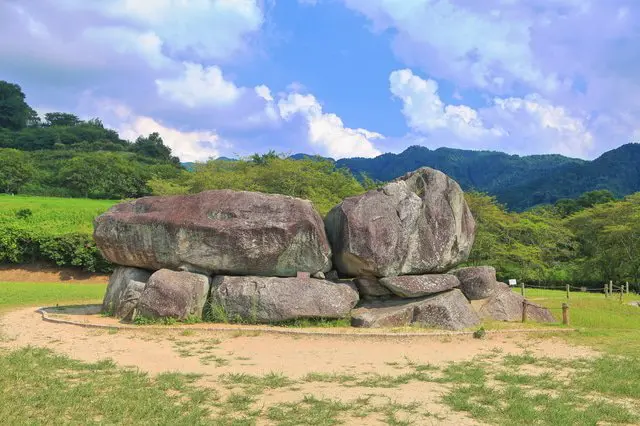
Ishibutai Kofun is an ancient tumulus grave mound in Asuka. The mound itself has worn away, leaving nothing but the stone sarcophagus. An influential figure of the Nara era, Soga-no-Umako, is said to be buried there. Made of 30 boulders weighing a combined 2300 tons, the ceiling stones alone are 77 tons, so you can surmise how advanced the public works and transportation systems were at the time. If you’re visiting Asuka Historical Park, definitely stop by.
Address: Nara Prefecture Takaichi district, Asuka, Shimasho 254
12. Naramachi - Nara's Traditional Townscape
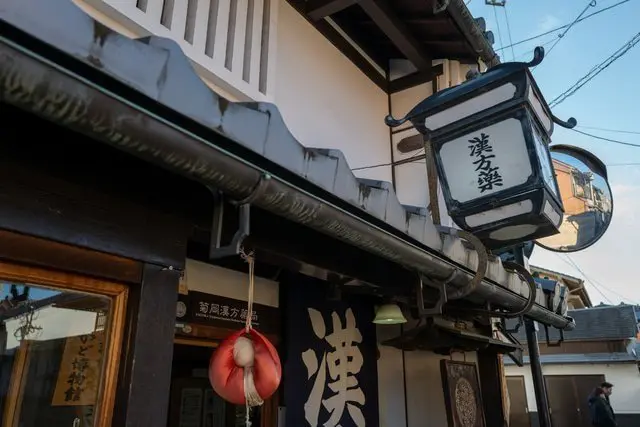
Centered around the former Gangoji compound, the Naramachi area is formally known as the Naramachi Urban Landscape Formation Area. Gangoji is a registered World Heritage site, and some of its roof tiles are exactly as they were in the old Nara area. These tiles are perhaps the oldest in Japan.
The unique traditional houses in Naramachi are narrow and long, and visitors can feel what it was like to live in them during the Edo period. Now these houses are occupied by cool cafes, cute accessory shops and various crafts workshops, so you can enjoy shopping and investigating what the area has to offer.
As you walk around Naramachi, you will see red stuffed animals hanging over the eaves of the houses. These ‘sacrifice monkeys’ are from Naramachi’s temple, Koshindo. They are charms that ward off catastrophe.
For more information, check out our 10 Places To Visit In Nara, The Ancient Capital Of Japan article.
Naramachi Information Center: Nara Prefecture, Nara City, Nakain-cho 21
A Model Itinerary for Visiting Nara

Here’s a two-day itinerary we recommend if you want to see as much of Nara as possible.
Day 1: In the morning, walk through Nara Park to visit Todaiji, Kasuga Taisha and Kofukuji. After you’ve had some local Nara food for lunch, head to Gangoji, then head to Naramachi once you’ve finished. Spend the remaining time on a considered stroll.
Day 2: In the morning, after you visit Yakushiji and Toshodaiji, enjoy the old majesty of Nara at Heijo Palace. At lunch, go to Horyuji and the Ishibutai Kofun in Asuka. If you want to see more of the ancient relics in the area, you should rent a bicycle.
For more information, check out our Enjoy Nara In Two Days! A Recommended Itinerary article.
Festivals And Events in Nara
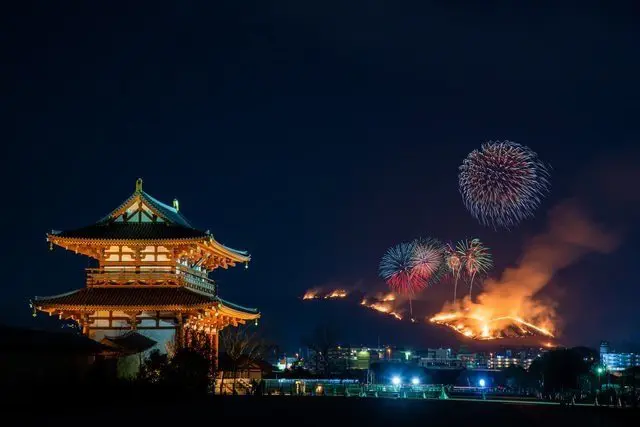
The Burning Of Mount Wakakusa
This event, held on January 4th each year, lets the people know that spring is coming. The gods of Todaiji, Kasuga Taisha and Kofukuji gather together, and when the signal comes, Mt. Wakakusa is set ablaze with 600 fireworks to comfort the souls of the dead, and to pray for dissaster prevention and world peace.
Location: Inside Nara Park, Mt. Wakakusa Area
Kasuga Festival
This festival at Kasuga Taisha, held on the day of the monkey, is also known as the Monkey Festival. On March 10th, evergreen trees on Mt. Kasuga are cut down and put up at the torii gate of the shrine (the Tatsunotatesakaki ceremony). On the 11th, there is a purification rite for the festival attendees (the Minoharae ceremony) and a ritual to appease the earth gods (the Ushinomiki ceremony).
On the 12th, kiyome-suna (purified sand) is placed before the gods (the Hitsujinosunaoki ceremony). Once preparations are complete, there will be a visit on the 13th from an imperial messenger carrying an offering from the Emperor, and a service to pray for the country’s security and the prosperity of its citizens will be conducted. Tourists cannot visit the temple during this festival so please be careful when planning your visit.
Nara Tokae - The Summer Lights Festival
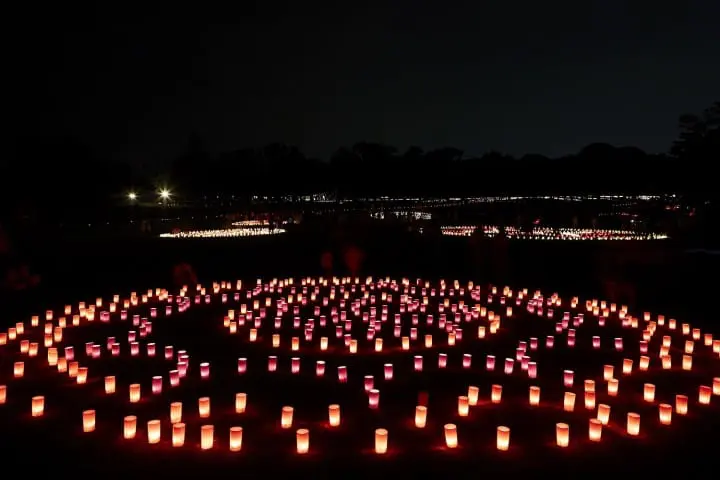
© JNTO
The Nara Tokae is held every year in early August for ten days. Part of Nara Park is lit with candles. Tokae are flower-shaped wax clumps with wicks, and got their name from a good omen in Buddhist teachings. The sight of floating candlelight in Nara is both magical and mysterious.
Nara Daimoji Okuribi - Fires on the Mountain
While this event is famous in Kyoto, it actually exists in Nara, too. On August 15th, people pray for the souls of fallen soldiers and for world peace, then light fires on Mt. Takamado. This combination of Shinto and Buddhist rites is quite unusual, and the “dai” character (big) is said to represent the cosmos.
10 Excellent Souvenirs from Nara
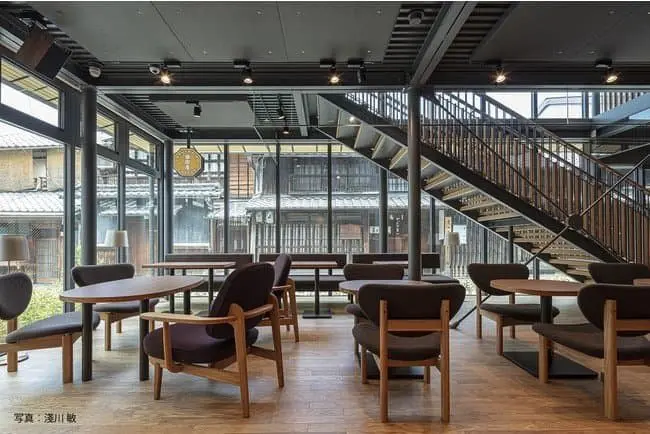
Nara has plenty of characteristic souvenirs, like persimmon leaf sushi, Narazuke pickles, Daibutsu pudding, kuzumochi and more. While these are delicious, they are fresh and won’t keep for long. Here we’ll recommend ten items that are perfect for bringing back to your home country.
1. Narazuke Cookies
These cookies contain chopped Narazuke pickles, but are surprisingly well-liked. The alcohol in the pickles has evaporated, leaving behind their flavor. They aren’t just delicious, but healthy, too.
2. Deer Sable Cookies
These crisp cookies from Yokota Fukueido are shaped like Nara deer. These cute snacks are a popular souvenir staple with tourists.
3. Goshinroku No Fun
Natives wince at the name, which means “deer droppings,” but this is a classic Nara souvenir. The treats have two varieties: a peanut-based one flavored with soy sauce, and another with beans coated in chocolate.
4. Nara-Exclusive Candies
Zeitaku Mame Honpo offers a nostalgic taste of snacks form back in the day, as well as Kintaro candy(*1) in the shape of the Great Buddha and deer.
*1: Kintaro candy is a rod-shaped confection made so that eating a cross-section reveals a face.
5. Ararezake
The famous Nara wine cellar Harushika produces mirin for drinking, as well as Kanbi sake, prized by aristocrats, and Japanese-made liqueurs. These elegantly sweet beverages lack any unpleasant aftertastes, so definitely try a glass.
6. Deer Fortunes
These fortunes, which you can buy at Kasuga Taisha, are made in the traditional Nara Ittobori style. Each fortune is made by hand, and every one features its own facial expression, so look for one you like.
7. Makeup Brushes
Nara’s shops stock ink and brushes used in the area’s traditional arts, so many people visit to collect fine-quality implements, but at Akashiya, you can get expertly crafted makeup brushes which make great use of that techonlogy.
8. Nara Tea Towels
These tea towels feature deer, Todaiji, the lanterns of Kasuga Taisha, and other Nara-specific designs, and they have a good reputation for absorption.
9. Deer Goods
Deer keyholders, deer bookmarks, deer clips, wooden deer card stands, and all sorts of other cute deer goods are available in Nara.
10. Great Buddha Stamps
There are lots of goods featuring the Great Buddha, but at the National Museum of Nara’s shop, you can pick up a unique stamp, with a playful yet soft design.
Shopping in Nara
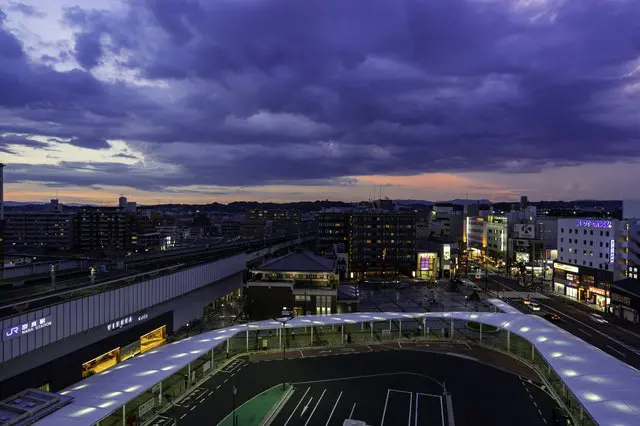
JR Nara Station - VIERA
Located above JR Nara Station, VIERA contains 22 shops where you can go digging for the perfect souvenirs, like Nara Miyakoji and Nara Meihinkan, with an abundant variety of persimmon leaf sushi, Narazuke pickles and other Nara items.
Kintetsu Nara Station - Time’s Place Nara
There are 14 shops at Time’s Place inside Kintetsu Nara Station, including GOTO-CHI, with a selection of persimmon leaf sushi and wagashi snacks.
Hotels in Nara

Many people only visit Nara for day trips, so there aren’t as many places to stay as other cities, but we’ll introduce you to some of the best spots.
Directly connected by deck to JR Nara Station, the Super Hotel Lohas Nara is less than 10,000 yen a night, but still offers entry to the Asuka-no-Yu hot spring and a free breakfast. The hotel is new, so it feels exceptionally clean, and it’s in a very convenient location. The Nikko Hotel Nara is a four-star hotel in the same area, and rooms start at 12,000 yen.
For people who’re looking for a more reasonable rate, there is the Nara Guesthouse 3F near Kintetsu Nara Station, as well as the Machiya Guesthouse Naramachi, where guests can stay in a traditional house.
For people who want to spend a special occasion in Nara, we recommend the Ryori Ryokan Edosan. With five sukiya-style (*2) buildings inside Nara Park - in other words, five rooms - regular rate plans for one person, including two meals, start at 20,000 yen.
Other options include the well-established Nara Hotel and the Nobori Oji Hotel, both four-star accommodations.
At Yanase-ya, you can stay in a classic machiya home. For more information, check out our machiya report article.
*2: Sukiya are tea parlor rooms.
Local Foods and Dining in Nara
Let us introduce the foods that best represent Nara.
Narazuke Pickles
Narazuke pickles are made by salt-pickling white gourds, cucumbers, ginger and other vegetables, then pickling them repeatedly in sake lees. This food dates back to the 8th century. It can take three to seventeen years for Narazuke pickles to fully mature, and the alcohol content gives them a flavor distinct from other Japanese pickles.
Chagayu Rice Porridge
Chagayu is a classic Nara breakfast, made from rice cooked in roasted green tea. This dish has continually been eaten by priests since before the year 1200. Nara’s chagayu is famous for its smoothness.
Persimmon Leaf Sushi
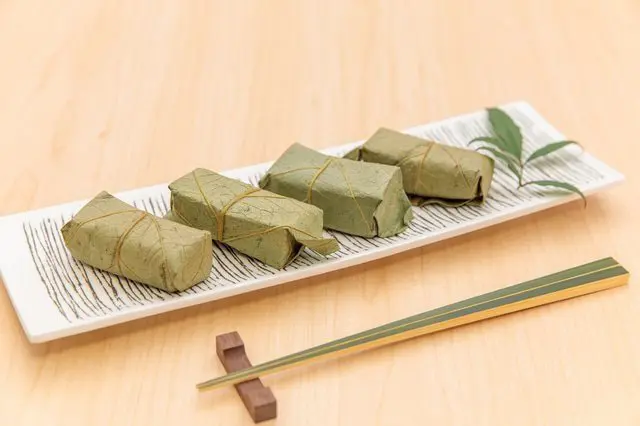
Nara is surrounded by mountains, so during the time when transportation systems and refrigerating technology had not yet been developed, seafood and salt were considered precious ingredients. It is said that this dish - made with thin slices of salted mackerel combined with rice, wrapped in a persimmon leaf and covered with a heavy rock - began as a feast item for summer festivals. Now, the fish used doesn’t have to be mackerel; other variations include salmon, sea bream, eel and shrimp. These bite-sized sushi wrapped in persimmon leaves are popular for being easy to eat.
For more information, check out this article: Sushi Wrapped in a Leaf? Try the Persimmon Leaf Sushi in Nara.
For Further Information, Check Out Nara's Tourist Information Centers
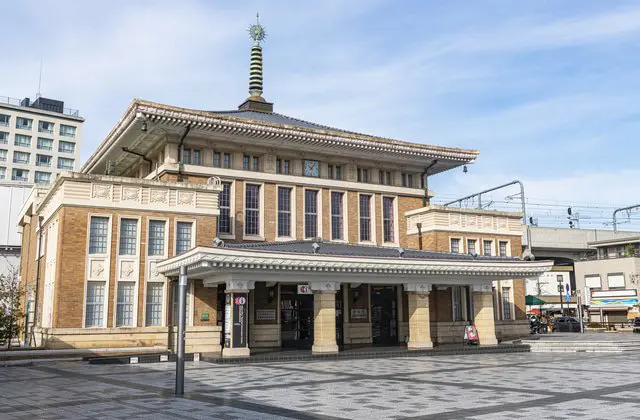
Nara City Tourist Information Centers
There are two information centers: one on the Yasuragi Road leading to Kintetsu Nara Station, and one at the intersection of Sanjo-dori Street that leads to JR Nara Station. There are English-speaking staff members available from 9 AM to 7 PM, and Chinese-speaking staff from 9 AM to 3:30 PM. The centers also offer free Wi-Fi access, and are open from 9 AM until 9 PM.
Address: Nara Prefecture, Nara City, Kamisanjo 23−4
Phone: 0742-22-3900
Nara City General Tourist Information Center
The former JR Nara Station building is currently used as a tourist information center. During operating hours (9 AM-9 PM), the foreign language-speaking staff can assist international tourists. The center also has an Internet search corner.
Address: Nara Prefecture, Nara City, Sanjo-Honmachi 1082, northeast of JR Nara Station
Phone: 0742-27-2223
Kintetsu Nara General Tourist Information Center
You can pick up tourist maps and pamphlets at this center located on the first floor of Kintetsu Nara Station. It’s open from 9 AM to 9 PM, and there are English-speaking staff available. Feel free to ask them anything about what there is to see in the city or about good dining places.
Address: Nara Prefecture, Nara City, Higashimuki Nakamachi Kintetsu Nara Station Building 1F
Phone: 0742-24-4858
Other Useful Information For Your Trip
If you want to exchange foreign currency and yen, use bank exchange counters and 7-Eleven ATMs.
Here are some useful Japanese phrases you can use when you’re staying at a hotel.
To use the convenient free Wi-Fi services in Japan, download this app beforehand.
photos by PIXTA
日本への訪日外国人の方が、もっと増えますように!





![[Open on December 20th and 21st] Free admission to Ikoma Sanjo Amusement Park, just 45 minutes from Osaka](https://resources.matcha-jp.com/resize/720x2000/2024/08/28-194409.webp)


































![[2026 Edition] FORMUAL 1 JAPANESE GRAND PRIX Information](https://resources.matcha-jp.com/resize/720x2000/2025/10/05-245984.webp)


![[2025 Update] Namba's spectacular illuminations! "Namba Hikari Tabi" with approximately 1 million shining lights](https://resources.matcha-jp.com/resize/720x2000/2025/12/12-252825.webp)